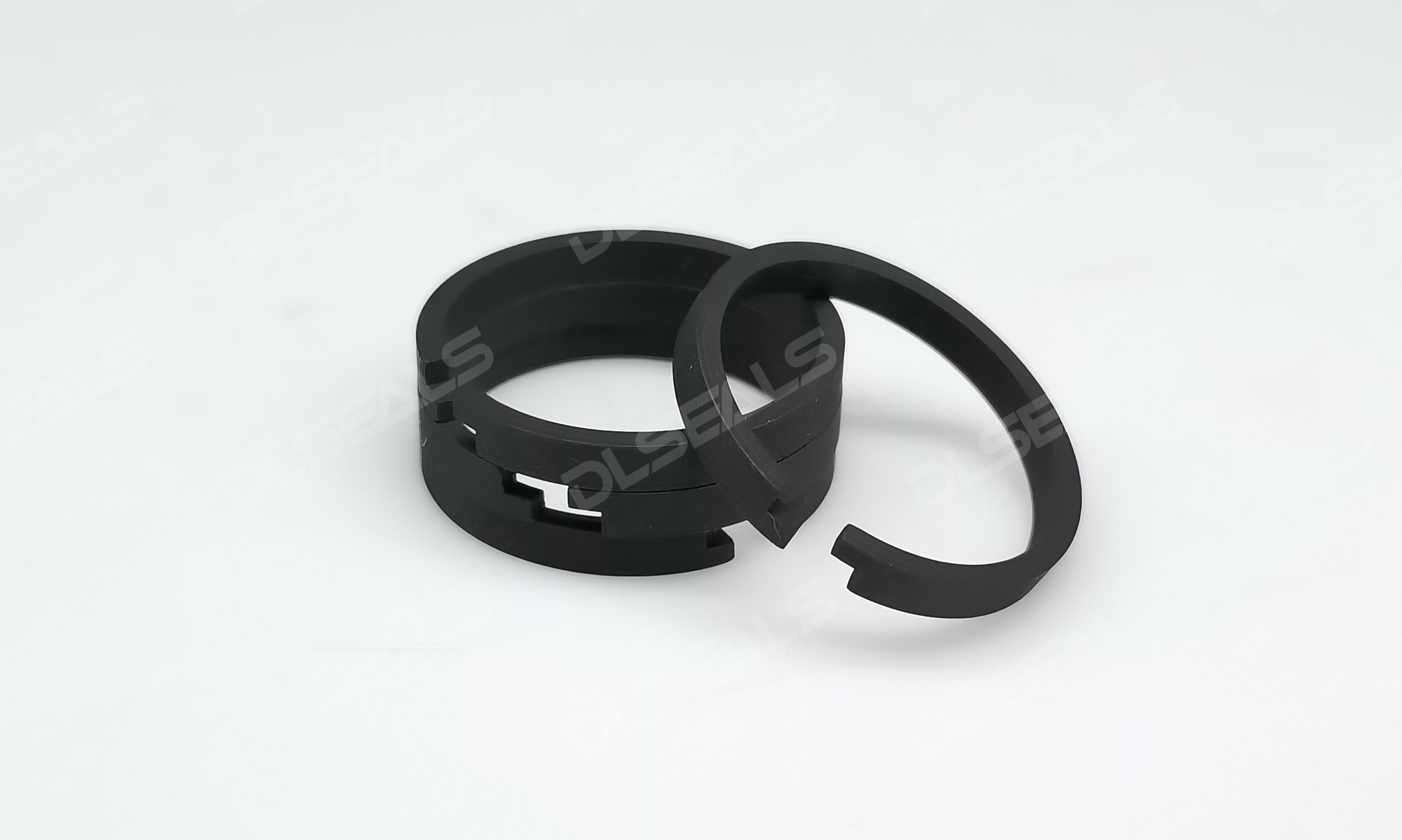News
A2025-10-23

As the "guardian of the heart" of an internal combustion engine, cast iron piston rings perform a crucial sealing mission under extreme conditions of high temperature, high pressure, and high speed. Working in precise coordination with the cylinder and piston, they ensure the efficient and stable operation of the engine. Due to their excellent overall performance, cast iron piston rings have become the most widely used type.
Cast iron piston rings play four indispensable key roles in an engine:
Sealing Function (Primary Task):
Effectively prevent high-temperature, high-pressure gases from the combustion chamber from leaking into the crankcase, minimizing gas leakage to the absolute minimum.
Pressure Staging: The first compression ring bears about 76% of the gas pressure, this drops to 20% at the second ring, and only about 4% remains by the third ring, creating an efficient "step-by-step" seal.
Oil Control Function:
The oil ring is responsible for precisely scraping excess lubricating oil off the cylinder wall while leaving an ultra-thin oil film to ensure proper lubrication and control oil consumption. This performance is critical in modern high-speed engines.
Heat Conduction Function:
70-80% of the heat from the piston crown is transferred through the piston rings to the cylinder walls for dissipation. This is vital for maintaining the piston assembly at a suitable operating temperature and preventing overheating damage.
Support Function:
Prevents direct contact between the piston and the cylinder wall, ensuring smooth piston movement, reducing friction, and preventing "piston slap."
Cast iron is the ideal material for piston rings due to the perfect alignment of its unique properties with the engine's demanding requirements:
Self-Lubrication: The graphite in cast iron acts as a natural solid lubricant, absorbing lubricating oil and providing superior self-lubricating properties under boundary lubrication conditions.
Excellent Mechanical Properties: High modulus of elasticity, low permanent set, necessary bending fatigue strength, and appropriate hardness meet the performance requirements of an elastic component.
Material Types:
Gray Cast Iron: The basic material, typically composed of Carbon 3.1-3.5%, Silicon 1.6-2.1%, Manganese 0.6-1.0%, with small amounts of alloying elements like Chromium and Copper.
Alloyed Cast Iron: Addition of elements like Copper, Chromium, and Molybdenum provides better heat resistance, wear resistance, and corrosion resistance.
Ductile Cast Iron: Features much higher bending strength (80-120 kg/mm²) and elastic modulus (15,000-17,000 kg/mm) than ordinary cast iron, offering strong impact resistance.
Precise manufacturing processes are key to piston ring performance:
Casting Processes:
Main methods include single-piece casting, barrel casting, and advanced split elliptical casting (e.g., German Goetze process), the latter effectively eliminating core shrinkage defects in the blank.
Key Surface Treatment Technologies:
Chromium Plating: High hardness (700-1000 HV), low friction coefficient, high corrosion resistance; can extend the life of the top ring by 3-5 times.
Molybdenum Coating (Moly Coating): Molybdenum has a high melting point (2620°C), high hardness (HV>700), low friction coefficient, good thermal conductivity, wear resistance, and thermal stability.
Phosphating: The phosphate coating has good oil retention properties, beneficial for initial run-in, and strong rust prevention.
Nitriding: Forms a hard nitride layer on the surface, with wear resistance surpassing chrome plating; an environmentally friendlier alternative process (e.g., gas nitriding, plasma nitriding, QPQ salt bath nitriding).
Based on structure and function, piston rings are mainly divided into compression rings and oil rings:
Compression Ring Types:
Rectangular (Plain) Ring: Simple structure, good for heat dissipation, but can cause "oil pumping."
Tapered Face Ring: Line contact, good for sealing and run-in, scrapes oil down and distributes oil up.
Torsional Twist Ring: Combines the advantages of the tapered ring while eliminating oil pumping. Installation direction is critical.
Trapezoidal (Keystone) Ring: Good anti-stick and sealing properties, suitable for high-thermal-load diesel engines.
Barrel Face Ring: Forms an oil wedge during both up and down strokes, reducing wear.
Oil Ring Types:
Cast Iron Oil Ring (Single-piece): Simple structure.
Steel Rail (Segment) Oil Ring: Composed of two chrome-plated steel rails and an expander spacer. High contact pressure, good conformability, large oil return passages, and excellent oil scraping performance. Widely used.
Correct installation and maintenance are crucial for ensuring performance and longevity:
Three Key Clearances:
End Gap (Butt Gap): Typically 0.25-0.50 mm.
Side Clearance (Axial Clearance in Groove): For the top ring (due to high temperature), usually 0.04-0.10 mm.
Back Clearance (Radial Clearance between Ring and Groove Bottom): Typically 0.50-1.0 mm.
Core Installation Guidelines:
Ring end gaps must be staggered around the circumference (e.g., 120° apart for three rings) to create a "labyrinth" seal.
The chrome-plated ring is installed in the top groove. The tapered face of a tapered ring must face upwards; the inner bevel or notch of a torsional twist ring usually faces upwards.
The gaps should not be aligned with the piston pin bore or the piston's vortex depression direction.
Maintenance Inspection:
Working surfaces must be free of scores, scratches, or peeling.
Curvature deviation should not exceed 0.02-0.04 mm.
The standard wear limit (sinkage in the groove) should not exceed 0.15-0.25 mm.
The performance of cast iron piston rings directly determines the efficiency, service life, and reliability of an engine. With continuous advancements in materials science and manufacturing technology, cast iron piston rings will continue to provide robust protection for various power machinery under extreme operating conditions, safeguarding the engine's strong "heartbeat."
[DLSEALS kindly Reminder] Sealing issues? Turn to DLSEALS! As a sealing component manufacturer, we specialize in customizing sealing components, providing a full range of services from design, research and development, production, testing, and more. If you have more information you'd like to know, feel free to contact us directly. DLSEALS's product experts are dedicated to serving you!